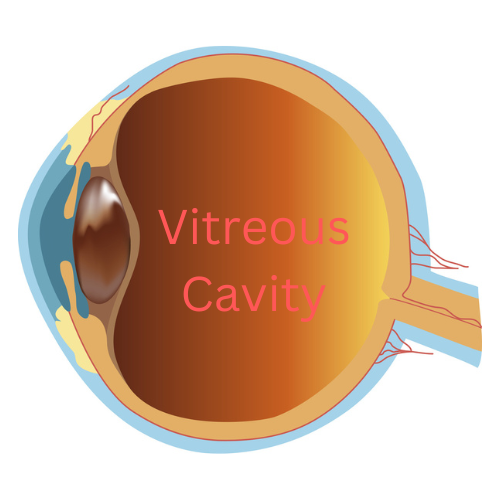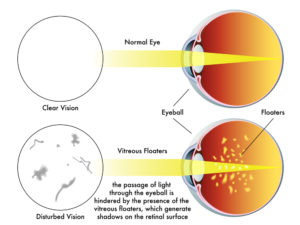FOV stands for Floater Only Vitrectomy. In my experience, this is the common name of the basic operation performed by a retina specialist called vitrectomy.
Vitrectomy and FOV, therefore, are synonyms. Vitrectomy is the standard operation performed by all retina specialists (for all reasons) whereas FOV refers to a vitrectomy performed for the removal of only (just) floaters.
Vitrectomy
Vitrectomy is the operation to remove the vitreous. The vitreous is the gel-like substance that fills the back of the eye.
The vitreous may be removed;
- To remove a vitreous hemorrhage (blood)
- Remove a foreign body
- Repair
- Retinal detachment
- Macular hole
- Epiretinal membrane
- Remove floaters
Types of FOV or Vitrectomy
All modern types of FOV are basically the same. They involve the creation of 3 holes in the eye:
- Left hand
- Right hand
- Infusion port to keep the eye filled with saline during the operation
There are slight changes in nomenclature to distinguish the size or thickness of the instruments used to enter the eye. The size of the sclerotomies (holes) the instruments create naturally vary in size. The thicker instruments create large holes and vice versa. 20 gauge instruments are the thickest and require sutures to close the sclerotomies. 23 and 25 gauge instrumentation create tinier sclerotomies and suture closure is up to the discretion of the retina specialist.
What Replaces the Vitreous?
The vitreous is cut away rapidly in very tiny miniscule pieces and is replaced by artificial saline solution. As the operation is proceeding, a tube is constantly infusing saline into the eye. After the operation is complete, your eye replaces the saline with aqueous humor in a matter of a couple days.
How is FOV Different than Vitrectomy
It’s not. It’s exactly the same. After the vitreous is removed, the operation is essentially over. FOV for floaters is exactly the same as FOV for vitreous hemorrhage – the goal of both is to simply clear opacities from the vitreous to create a clear path for vision.
If you would like to schedule an appointment, please call us (877) 245.2020.


